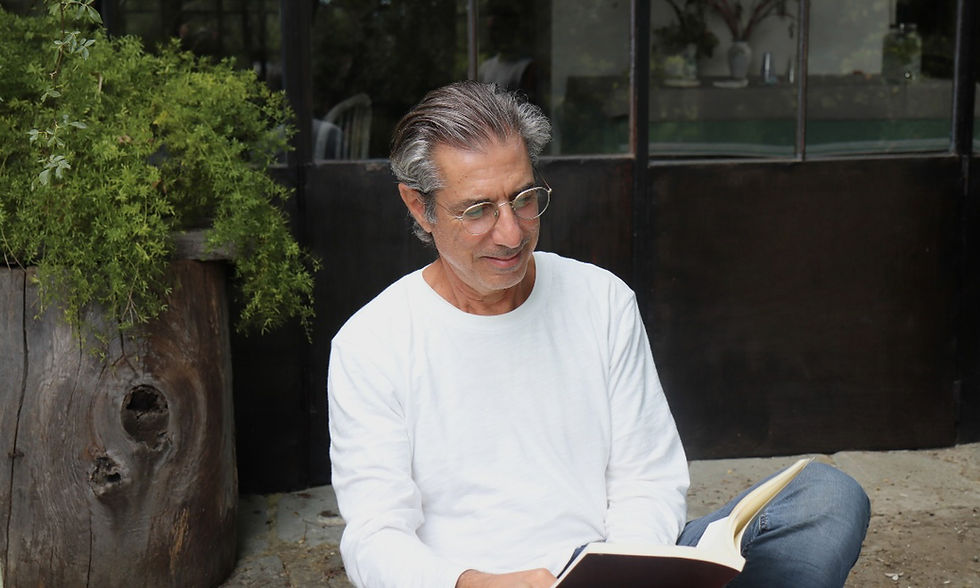Yiannis Papadakis and his work on the anthropology of cemeteries
- associazione68
- May 8
- 4 min read
Updated: May 15

On Tuesday 22 April 2025, a talk on the subject of cemeteries, entitled Death, the great (in)equalizer: reflections on cemeteries in Denmark, Cyprus and Japan, was held at the cultural association Il Palmerino. Given by Yiannis Papadakis, a Cambridge graduate in social anthropology and currently professor in the Department of Social and Political Sciences at the University of Cyprus, the event aimed to present the key directions of his research, and in particular, an initial response to the overarching question: what can cemeteries tell us about a society?
“It all starts in Denmark”
For the anthropologist, everything begins with a visit to the Assistens cemetery, located in Copenhagen, Denmark. Opened in 1760, it is in every way a product of Danish social democracy. An open urban space, it is not a place apart from the city and removed from social life, but on the contrary, a public space, a place of transit, of passage, of strolling. Most people are buried there in an open space with no grave, meaning no tombstone or monument: just an empty space. This makes one then unsure whether to describe as “sepulchral.” Since urns holding ashes are buried directly in the public garden, it does not adhere to the funerary traditions of the Greco–Latin world, and thus, of our usual categories of understanding. From that moment, the anthropologist takes a step looking back at his own society, Cyprus: what does a grave and tombstone really signify, is it a place of remembrance, or rather a gesture that converts the dead into a monument? What need is expressed in this permanence, this visibility, this transcendence of corporeality?
Anthropological perspective and (in)equality
Though Yiannis Papadakis also studied philosophy at the University of California at Santa Cruz, anthropology differs in that it does not seek ontology, or, as political philosophy, a “supra–political truth” (B.Boudou). A play of correspondences between what is familiar and what is not, between comparison and empirical observation, the anthropologist’s gaze responds to a particular epistemology. By challenging the paradigm of death as ‘the great equaliser’, Yiannis Papadakis seeks to show that death, and its scenography, is a matter of class, privilege, exclusion, insecurity and private performance. Even in Denmark, individualistic impulses have been emerging. These can be observed within the anonymous common graves, visible through the emergence of a few proto–graves arbitrarily established by people choosing a certain spot to lay flowers creating mini and transitory monuments. This can enable reflection on the nature of spaces, on what Foucault called the “curious heterotopia of the cemetery.” A place that is wholly other, the cemetery nonetheless remains “connected with all the other emplacements of the city”, he stated – and therefore, with the hierarchies that compose it.
From Cyprus to Japan
Since that visit to a Danish cemetery, the researcher has been led to compare it with those of the island he is from – Cyprus – as well as of Japan, which he visited. Three ideal–types thus emerge: to the Danish model of death being managed by the welfare state, stands opposed (or juxtaposed) the Cypriot mortuary culture, where the central actor remains the family and Japan, where people used to be also buried in corporate graves, e.g. Mazda or Panasonic. The Japanese have “privatised” the funeral arrangements in a double sense, giving substance to the now well–known expression of “death industry”. As a mark of intimacy, the Japanese tombstone was also, more surprisingly, the space of the private, the economic, the corporate. Belonging to a company, being one of the key markers of male identity in Japan until 2000s, people could be entombed there as well as in a family grave. As a sign of a valued social existence that continues, it also revealed the disaffiliation of some, who did not have neither a company nor relatives.
Lost souls and minorities
Located in the Tama cemetery, in Japan, one of the anonymous mass graves is reserved for the muenbotoke – literally, the dead without ties. Abandoned in life, the muenbotoke, are also uncared for in death despite this shared resting place, and embody the growing inequalities and individualisation of Japanese society as well as the impossibility of reaching the state of restful afterlife in the other world. The other world not being, in the Buddhist cosmology, part of the six realms composing the cycle of rebirths (to which the human world belongs), but a Pure land, outside of samsara, that of the Buddha Amida where the soul’s wandering is no longer possible. These lost souls, the muenbotoke, represent one of the Japanese people’s greatest fears.
On the other hand, different types of marginalisation and separation were observed in Denmark: the geographical distinction of certain minority groups, outside the anonymous common grave, was demanded by such migrant groups who wished to keep together in death as they did in life. Was this a sing of lack of integration or feelings of exclusion? Others also exercising their agency worked towards the establishment of their own communities in death. These become, through their gravity, the bearers of a silent yet powerful denunciation of homophobia, or homelessness. For instance, the LGBTQ+ community established its own anonymous grave with their symbols. Also, in 2013, the artist Leif Sylvester Petersen inaugurated his bronze work An angel among us in the Assistens cemetery in Copenhagen to mark the anonymous collective grave of the homeless. A way of reminding us, through a few juvenile figures, charming and variegated, that angels too, belong to this world.
Alan B.
For more information you may find Yiannis Papadakis’ published work online, or you are welcome to write to him at papadakis.yiannis@ucy.ac.cy




Comments